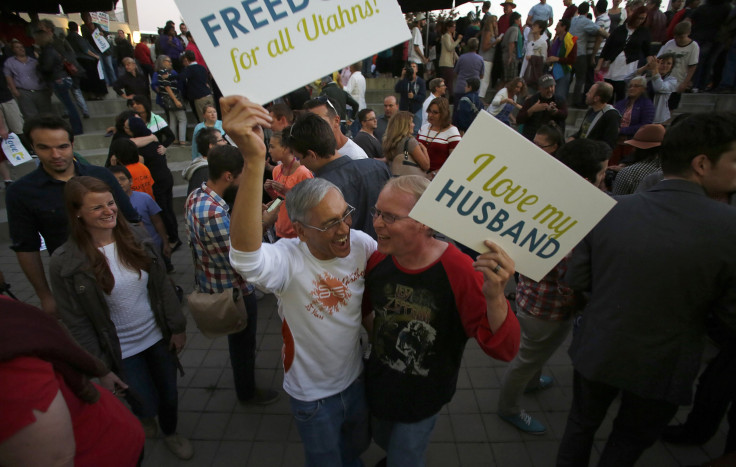Where Is Gay Marriage Legal? Marriage Equality Laws Become Norm In US, But Some Western Countries Still More Progressive

Marriage equality is expected to soon become legal in 30 states after the U.S. Supreme Court refused Monday to hear cases from a handful of states seeking to keep their same-sex marriage bans in place. The trend represents a remarkable shift in the United States, where only 10 years ago Massachusetts became the first state to recognize gay marriage. But while the U.S. is becoming much more accepting of gay relationships, particularly compared with some Middle Eastern or African countries that outlaw gay sex, the so-called land of the free still trails other nations in the Western world when it comes to gay marriage laws.
So, where is gay marriage legal? The Netherlands became the first country to approve a national gay marriage law in 2001. Most of Western Europe recognizes gay marriage rights, including France, Spain, Luxembourg, Portugal, Sweden, Norway, the United Kingdom, Iceland, Denmark, Portugal and Belgium. New Zealand, Canada and South Africa also allow gay marriage. In Latin America, where Catholic traditions and conservative governments tend to be anti-gay, Brazil, Argentina and Uruguay have marriage equality laws.
Another handful of countries recognize some form of same-sex civil unions. In Europe, Hungary, Ireland, Slovenia and Germany have progressive civil union laws. Colombia and Ecuador also recognize same-sex civil unions. Similar to the United States, Mexico has regional gay marriage laws.
On the other side of the political spectrum, at least five countries have death penalties for homosexuality: Mauritania, Sudan, Saudi Arabia, Yemen and Iran.
In the U.S., changing demographics suggest that even without a national marriage equality law, the nation has become one of the most popular places for gay marriage in the world, highly because of its large population. In 2013, there were an estimated 690,000 same-sex couples in the U.S., including 124,000 married couples. With more states recognizing gay marriage, there has been a 50 percent increase in same-sex married couples since 2010, according to the Williams Institute in Los Angeles, which tracks gay demographics.
Before the Supreme Court's decision Monday, only 19 states in Democratic strongholds allowed gay marriage. The court's refusal to hear the gay marriage cases effectively passed marriage equality in Indiana, Oklahoma, Utah, Virginia and Wisconsin. It also means Colorado, North Carolina, South Carolina, Kansas, West Virginia and Wyoming could soon have to lift bans on same-sex marriage.
The current Supreme Court has been particularly progressive on gay marriage issues. In 2013, the court struck down the 1996 Defense of Marriage Act that denied federal benefits to same-sex couples. It also declined that year to overturn the California Supreme Court's decision upholding same-sex civil unions.
© Copyright IBTimes 2024. All rights reserved.












